Monday, April 11th 2011

New Intel Atom Processor for Tablets Spurs Companion Computing Device Innovation
Intel Corporation today announced that the Intel Atom platform, formerly codenamed "Oak Trail," is now available and will be in devices starting in May and throughout 2011. Over 35 innovative tablet and hybrid designs from companies including Evolve III, Fujitsu Limited, Lenovo, Motion Computing, Razer, and Viliv are based on "Oak Trail" and running a variety of operating systems.
In addition, at the Intel Developer Forum in Beijing, the company will give a sneak peak of its next-generation, 32nm Intel Atom platform, currently codenamed "Cedar Trail." This solution will help to enable a new wave of fanless, cool and quiet, sleek and innovative netbooks, entry-level desktops and all-in-one designs."The new Intel Atom 'Oak Trail' platform, with 'Cedar Trail' to follow, are examples of our continued commitment to bring amazing personal and mobile experiences to netbook and tablet devices, delivering architectural enhancements for longer battery life and greater performance," said Doug Davis, vice president and general manager of the Netbook and Tablet Group at Intel. "We are accelerating the Intel Atom product line to now move faster than Moore's law, bringing new products to market on three process technologies in the next 3 years."
The new Intel Atom processor Z670, part of the "Oak Trail" platform, delivers improved video playback, fast Internet browsing and longer battery life, without sacrificing performance. The rich media experience available with "Oak Trail" includes support for 1080p video decode, as well as HDMI. The platform also supports Adobe* Flash, enabling rich content and Flash-based gaming.With these significant improvements in power-efficient performance, the Intel Atom processor Z670 allows applications to run on various operating systems, including Google* Android*, MeeGo* and Windows*. This unique flexibility delivers both new experiences and more choice when it comes to tablets and hybrid designs that combine the best features of the netbook and tablet together.
The platform also helps deliver smaller, thinner and more efficient devices by packing integrated graphics and the memory controller directly onto the processor die. The processor is 60 percent smaller than previous generations with a lower-power design for fanless devices as well as up to all-day battery life1. Additional features include Intel Enhanced Deeper Sleep that saves more power during periods of inactivity as well as optimized Intel SpeedStep technology. An integrated HD decode engine enables smooth 1080p HD video playback at a fraction of the power consumption.
In addition, Intel Atom Z670 processors come with the Intel SM35 Express Chipset, delivering a lead-free2, halogen-free3 design with high-speed USB 2.0 for greater performance and Intel High-Definition Audio to enable premium home theater sound.
Also ideal for small form-factor and portable embedded designs, the platform provides an excellent solution for a range of tablets in retail, medical and industrial applications. Solutions such as mobile clinical assistants allow medical staff to directly input data into patients' electronic files and avoid paper charting. This can result in a reduction in errors, better workflow, higher productivity and reduced paper handling and overhead costs. In addition to the Intel Atom Z670, Intel is offering the Intel Atom processor Z650 for embedded devices with 7-year lifecycle support on Windows and MeeGo operating systems.
Based on Intel's leading-edge 32nm process technology, the next-generation "Cedar Trail" platform will feature improvements in graphics capabilities including Blu-ray 2.0 support, a dedicated media engine for full 1080p playback and additional digital display options including HDMI output and DisplayPort. New features will include Intel Wireless Music, Intel Wireless Display, PC Synch and Fast Boot. In addition, the enhancements made in power consumption and TDP will enable fanless designs with longer battery life. This means great acoustics without the hum of a fan and improved ruggedness and aesthetics of the design. Intel is currently sampling "Cedar Trail" to all major OEMs and ODMs. Users can look forward to a new generation of innovative mobile and desktop designs based on the "Cedar Trail" platform in the second half of 2011.
In addition, at the Intel Developer Forum in Beijing, the company will give a sneak peak of its next-generation, 32nm Intel Atom platform, currently codenamed "Cedar Trail." This solution will help to enable a new wave of fanless, cool and quiet, sleek and innovative netbooks, entry-level desktops and all-in-one designs."The new Intel Atom 'Oak Trail' platform, with 'Cedar Trail' to follow, are examples of our continued commitment to bring amazing personal and mobile experiences to netbook and tablet devices, delivering architectural enhancements for longer battery life and greater performance," said Doug Davis, vice president and general manager of the Netbook and Tablet Group at Intel. "We are accelerating the Intel Atom product line to now move faster than Moore's law, bringing new products to market on three process technologies in the next 3 years."
The new Intel Atom processor Z670, part of the "Oak Trail" platform, delivers improved video playback, fast Internet browsing and longer battery life, without sacrificing performance. The rich media experience available with "Oak Trail" includes support for 1080p video decode, as well as HDMI. The platform also supports Adobe* Flash, enabling rich content and Flash-based gaming.With these significant improvements in power-efficient performance, the Intel Atom processor Z670 allows applications to run on various operating systems, including Google* Android*, MeeGo* and Windows*. This unique flexibility delivers both new experiences and more choice when it comes to tablets and hybrid designs that combine the best features of the netbook and tablet together.
The platform also helps deliver smaller, thinner and more efficient devices by packing integrated graphics and the memory controller directly onto the processor die. The processor is 60 percent smaller than previous generations with a lower-power design for fanless devices as well as up to all-day battery life1. Additional features include Intel Enhanced Deeper Sleep that saves more power during periods of inactivity as well as optimized Intel SpeedStep technology. An integrated HD decode engine enables smooth 1080p HD video playback at a fraction of the power consumption.
In addition, Intel Atom Z670 processors come with the Intel SM35 Express Chipset, delivering a lead-free2, halogen-free3 design with high-speed USB 2.0 for greater performance and Intel High-Definition Audio to enable premium home theater sound.
Also ideal for small form-factor and portable embedded designs, the platform provides an excellent solution for a range of tablets in retail, medical and industrial applications. Solutions such as mobile clinical assistants allow medical staff to directly input data into patients' electronic files and avoid paper charting. This can result in a reduction in errors, better workflow, higher productivity and reduced paper handling and overhead costs. In addition to the Intel Atom Z670, Intel is offering the Intel Atom processor Z650 for embedded devices with 7-year lifecycle support on Windows and MeeGo operating systems.
Based on Intel's leading-edge 32nm process technology, the next-generation "Cedar Trail" platform will feature improvements in graphics capabilities including Blu-ray 2.0 support, a dedicated media engine for full 1080p playback and additional digital display options including HDMI output and DisplayPort. New features will include Intel Wireless Music, Intel Wireless Display, PC Synch and Fast Boot. In addition, the enhancements made in power consumption and TDP will enable fanless designs with longer battery life. This means great acoustics without the hum of a fan and improved ruggedness and aesthetics of the design. Intel is currently sampling "Cedar Trail" to all major OEMs and ODMs. Users can look forward to a new generation of innovative mobile and desktop designs based on the "Cedar Trail" platform in the second half of 2011.
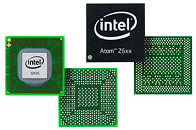
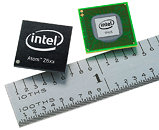

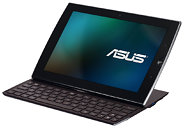
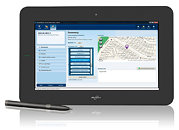
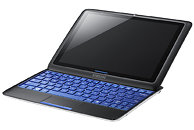
16 Comments on New Intel Atom Processor for Tablets Spurs Companion Computing Device Innovation
if you need faster, esata or gigabit ethernet are the way to go. usb3 will be great, when it's ubiquitous. i do agree new devices should have it - but a few in this generation will not be held back by a lack of it, i don't think.
At least I've met some people that are like that.
USB (1.5 Mb/s), USB 1.1 Full-Speed (12 Mb/s), USB 2.0 Hi-Speed (480 Mb/s), USB 3.0 SuperSpeed (4.8 Gb/s).
The jump from 12 Mb/s to 480 Mb/s was huge. Hence "Hi-Speed" sold it.
Intels reaction to AMD's APU is not enough. AMD can handle hidef content in small form factor devices.
I would almost predict the next gen apple ipad to feature APU tech.
in other news does anyone know if this will be able to compete with AMD's brand new laptop platform, i heard amd's has over 400 shaders on the gpu:eek:
This platform does not compete against the AMD's brand new platform, this platform aims at sub netbook size devices, while AMD's platform is targetted at the mainstream laptop size.
We want Llano AMD on those things, Nvidia Ion is not good enough !